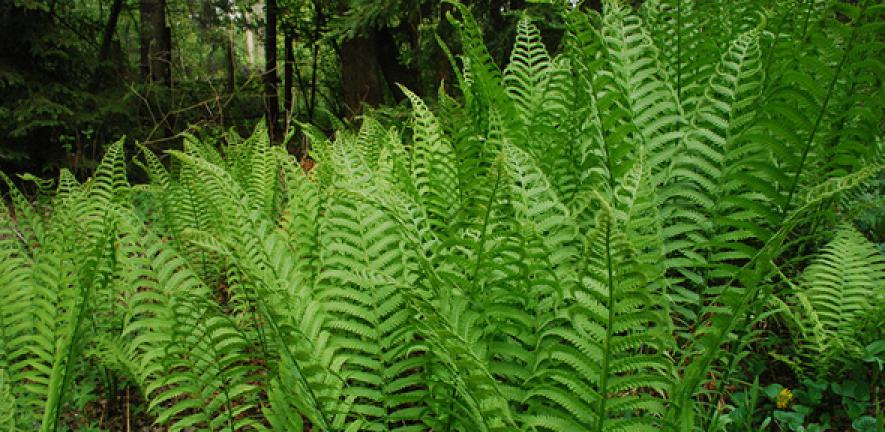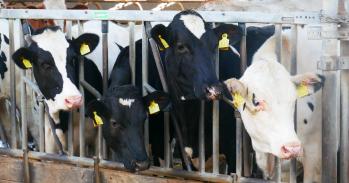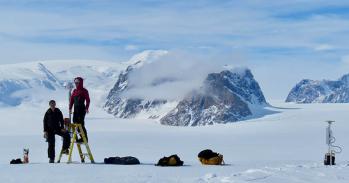
New research suggests that a temperature increase of 4 degrees is likely to “saturate” areas of dense vegetation with carbon, preventing plants from helping to balance CO2 escalation - and consequently accelerating climate change.
New research suggests that a temperature increase of 4 degrees is likely to “saturate” areas of dense vegetation with carbon, preventing plants from helping to balance CO2 escalation - and consequently accelerating climate change.
Global vegetation contains large carbon reserves that are vulnerable to climate change, and so will determine future atmospheric CO2
Andrew Friend
Latest climate and biosphere modelling suggests that the length of time carbon remains in vegetation during the global carbon cycle - known as ‘residence time’ - is the key “uncertainty” in predicting how Earth’s plant life on land - and consequently almost all life - will respond to higher CO2 levels and global warming, say researchers.
Carbon will spend increasingly less time in vegetation as the negative impacts of climate change take their toll through factors such as increased drought levels - with carbon rapidly released back into the atmosphere where it will continue to add to global warming.
Researchers say that extensive modelling shows a 4 degree temperature rise will be the threshold beyond which CO2 will start to increase more rapidly, as natural carbon ‘sinks’ of global vegetation become “saturated” and unable to sequester any more CO2 from the Earth’s atmosphere.
They call for a “change in research priorities” away from the broad-stroke production of plants and towards carbon ‘residence time’ - which is little understood - and the interaction of different kinds of vegetation in ecosystems such as carbon sinks.
Carbon sinks are natural systems that drain and store CO2 from the atmosphere, with vegetation providing many of the key sinks that help chemically balance the world - such as the Amazon rainforest and the vast, circumpolar Boreal forest.
As the world continues to warm, consequent events such as Boreal forest fires and mid-latitude droughts will release increasing amounts of carbon into the atmosphere - pushing temperatures ever higher.
Initially, higher atmospheric CO2 will encourage plant growth as more CO2 stimulates photosynthesis, say researchers. But the impact of a warmer world through drought will start to negate this natural balance until it reaches a saturation point.
The modelling shows that global warming of 4 degree will result in Earth’s vegetation becoming “dominated” by negative impacts - such as ‘moisture stress’, when plant cells have too little water - on a global scale.
Carbon-filled vegetation ‘sinks’ will likely become saturated at this point, they say, flat-lining further absorption of atmospheric CO2. Without such major natural CO2 drains, atmospheric carbon will start to increase more rapidly - driving further climate change.
The researchers say that, in light of the new evidence, scientific focus must shift away from productivity outputs - the generation of biological material - and towards the “mechanistic levels” of vegetation function, such as how plant populations interact and how different types of photosyntheses will react to temperature escalation.
Particular attention needs to be paid to the varying rates of carbon ‘residence time’ across the spectrum of flora in major carbon sinks - and how this impacts the “carbon turnover”, they say.

The Cambridge research, led by Dr Andrew Friend from the University’s Department of Geography, is part of the ‘Inter-Sectoral Impact Model Intercomparison Project’ (ISI-MIP) - a unique community-driven effort to bring research on climate change impacts to a new level, with the first wave of research published today in a special issue of the journal Proceedings of the National Academy of Sciences.
“Global vegetation contains large carbon reserves that are vulnerable to climate change, and so will determine future atmospheric CO2,” said Friend, lead author of this paper. “The impacts of climate on vegetation will affect biodiversity and ecosystem status around the world.”
“This work pulls together all the latest understanding of climate change and its impacts on global vegetation - it really captures our understanding at the global level.”
The ISI-MIP team used seven global vegetation models, including Hybrid - the model that Friend has been honing for fifteen years - and the latest IPCC (Intergovernmental Panel on Climate Change) modelling. These were run exhaustively using supercomputers - including Cambridge’s own Darwin computer, which can easily accomplish overnight what would take a PC months - to create simulations of future scenarios:
“We use data to work out the mathematics of how the plant grows - how it photosynthesises, takes-up carbon and nitrogen, competes with other plants, and is affected by soil nutrients and water - and we do this for different vegetation types,” explained Friend.
“The whole of the land surface is understood in 2,500 km2 portions. We then input real climate data up to the present and look at what might happen every 30 minutes right up until 2099.”
While there are differences in the outcomes of some of the models, most concur that the amount of time carbon lingers in vegetation is the key issue, and that global warming of 4 degrees or more - currently predicted by the end of this century - marks the point at which carbon in vegetation reaches capacity.
“In heatwaves, ecosystems can emit more CO2 than they absorb from the atmosphere,” said Friend. “We saw this in the 2003 European heatwave when temperatures rose 6°C above average - and the amount of CO2 produced was sufficient to reverse the effect of four years of net ecosystem carbon sequestration.”
For Friend, this research should feed into policy: “To make policy you need to understand the impact of decisions.
“The idea here is to understand at what point the increase in global temperature starts to have serious effects across all the sectors, so that policy makers can weigh up impacts of allowing emissions to go above a certain level, and what mitigation strategies are necessary.”
The ISI-MIP team is coordinated by the Potsdam Institute for Climate Impact Research in Germany and the International Institute for Applied Systems Analysis in Austria, and involves two-dozen research groups from eight countries.
This work is licensed under a Creative Commons Licence. If you use this content on your site please link back to this page.





